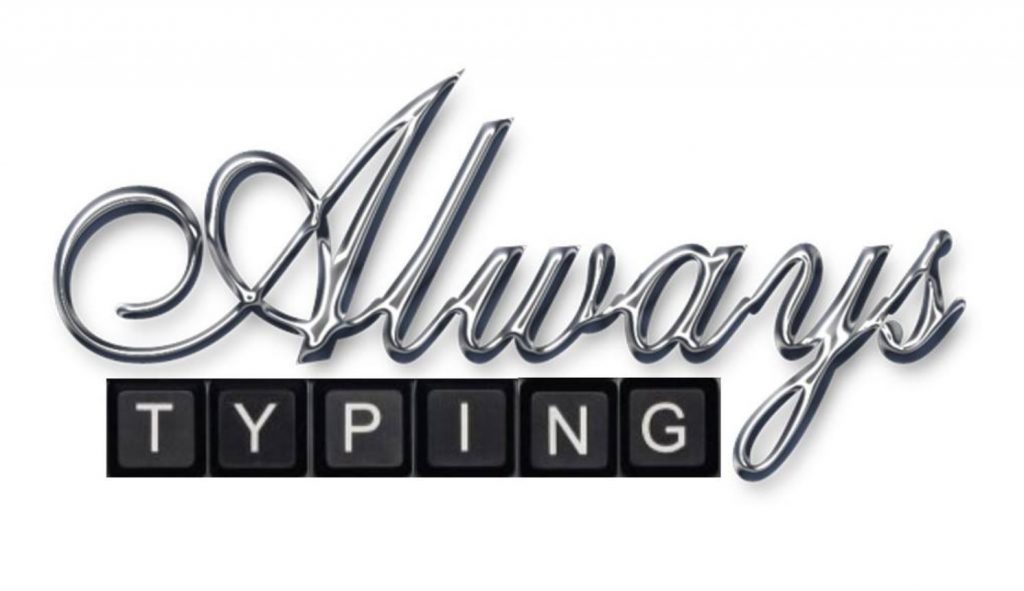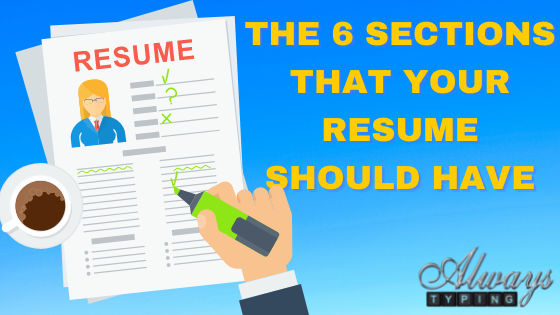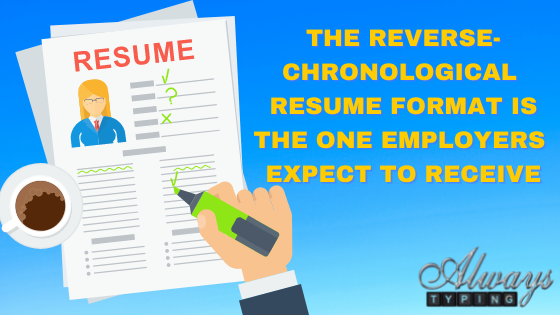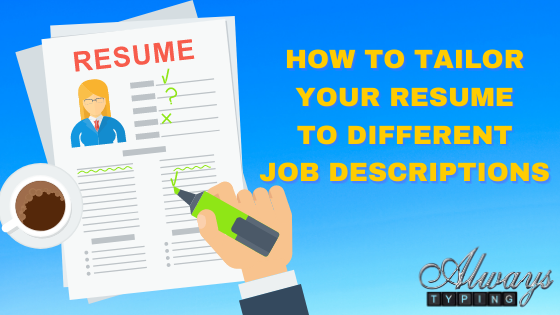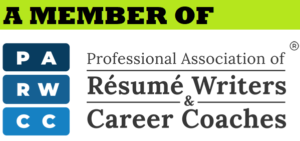Considering that your resume is probably the most important financial document you’ll ever own, making sure that it is properly crafted is of the utmost importance. Did you wrinkle your brow at the concept of a resume being a financial document? Let’s think about it for a second. Without a job, you can’t pay bills, go on vacation, or plan for retirement. Without a great resume, you can’t win the interview that will land the job. Now that’s settled, let’s dive into the 6 sections that must always be on your resume. Your resume and the Applicant Tracking System (ATS) Before a hiring manager even lays eyes on your resume, it often undergoes scrutiny by the ATS. These systems meticulously scan resumes, searching for relevant keywords, experience, and education. Properly structuring your resume, with the reverse-chronological format being the most common choice, along with the correct section headers, is crucial for getting past the ATS. So, what are the sections that you need on your resume? Contact information Your contact details should take the prime position at the top of the page. Do not bury them in the footer or set them as a header. Make them an integral part of your document to ensure the hiring manager can easily find your information. Placing it in the footer can make it difficult for the ATS to parse your details. You can creatively style your contact information with bold fonts and a subtle border to set it apart from the body of your resume. Title You should add a title, centered on a line by itself just below your contact info. It will represent what you want to do and will mirror the job description. A hiring manager will only spend about 6 seconds glancing at your resume. A title will help them immediately know what your job goal is. Be creative here! If the job description mentions the need to fill a position for a Nurse Practitioner, you need to include those words in your title. However, you can expand on that a bit to stand out from the crowd. Use something like “Patient-Centric Nurse Practitioner” instead. Professional summary The very next thing on the page should always be your Professional Summary, Career Summary, Professional Profile, or whatever else you want to call it. This is a 3-5 sentence statement about you that basically answers the Tell me about yourself interview question. Where you’ve been in your career, where you’re going, and how you’ll use your experience to get there. The days of writing an Objective are dead (by the way, the days of the one-page resume are dead, too). Just beneath the professional summary will be a SKILLS list. This is a simple list of 9-12 keywords. It’s a mix of hard skills (things you know how to do because of education and experience) and soft skills (personality traits). This list is directly targeted to the program/job you’re applying to. Professional experience Begin by listing your most recent position first and work your way back to your first position. However, don’t go further back than about 10 years. Keeping the content on your resume within the last 10 years ensures that it is fresh and current. The main idea here is context. You want to put what you did into a context that the hiring manager can relate to the job she is trying to fill. So, you worked at Burgers R Us as a Front Counter Manager and you trained the new employees. That’s great! Put two words into your brain right now, “so what?” The hiring manager is going to be thinking, you might as well be thinking it. Every time you write something on your resume, think “so what?” Why am I writing this? What value did it add to my employment at Burgers R Us? What value will it bring to my new employer? Additionally, it is important to talk about what you achieved instead of just what your responsibilities were. Just because you were supposed to do something at your last job doesn’t mean you actually did it. If you talk about what you achieved, you can better showcase how you will help the company to which you’re applying. Don’t forget about achievements: There needs to be at least 5 measurable accomplishments listed on your resume. These can be qualitative or quantitative. For example, a great quantitative achievement would be to talk about how many students you teach or what percentage you’ve been able to raise test scores. “Reviewed TABE test scores to ascertain student shortfalls and used those inefficiencies as opportunities for improvement, resulting in a 15% increase in scores over the prior year.” Education This section seems fairly self-explanatory. A huge opportunity is missed by a lot of people in the education section, though. Instead of just listing your degree and where you went to school, you can further demonstrate your knowledge by listing some of the courses you took. Now, if you took Art Appreciation as an elective, it probably will not help to list that (unless you’re going into a creative field). DO NOT list your high school. If you have higher education, the assumption is that you finished high school or at least obtained your GED, as you can’t get into college without one or the other. Even if you have no higher education, my suggestion would still be not to list your high school; just leave the education section completely off your resume. Listing high school doesn’t say, “I finished high school,” it says, “I didn’t go to college.” The absence of the education section will not cause you to miss out on an interview; however, it will give you and the interviewer something to talk about. Awards, certifications, and volunteer work It is important to list what you do outside of work and school. The idea of listing awards and certificates is fairly common, but many people leave off volunteer work. Were you the president of
The reverse chronological resume is the best format for landing your dream job
When it comes to job hunting, your resume is your golden ticket. It’s the first impression you’ll make on potential employers and plays a crucial role in securing an interview. Among the various resume formats available, the reverse-chronological resume stands out as the preferred choice for job seekers. There are a lot of job seekers who think the way to stand out from the crowd during a job search is to have a creatively designed — pretty — resume. However, the reverse chronological resume is the best format to use for landing your dream job. In this article, we will explore why the reverse-chronological resume is the best format to use when applying for jobs and how it can help you showcase your qualifications and experiences effectively. Why should you avoid heavily formatted, creative resumes? A quick Google search for a resume template will produce hundreds of thousands of heavily formatted and over-designed resume styles. Opting for such formats significantly heightens the risk of encountering rejection by the Applicant Tracking System (ATS), a tool utilized by more than 90% of companies. ATS systems meticulously scan resumes for various elements, including years of experience, educational qualifications, relevant keywords, font, and margin specifications, and the number of quantifiable accomplishments presented. If the system struggles to interpret these components, it automatically dismisses the resume. The most prevalent consequence of ATS rejection is the phenomenon known as “ghosting.” In this scenario, the system promptly discards the resume without ever forwarding it to a human evaluator. Consequently, those responsible for hiring remain oblivious to the job seeker’s existence, and no follow-up communication is initiated. Furthermore, overly stylized and creatively designed resumes can divert attention away from their substantive content, making it arduous for employers to pinpoint essential information. Moreover, it’s imperative to recognize that creative resumes may not align with the expectations of all industries or positions. In conservative sectors such as finance or law, a flamboyant and imaginative resume could be perceived as unprofessional. Therefore, it is crucial to take into account industry standards and the preferences of the hiring organization when deliberating on the format of your resume. The overall advice you’ll receive from recruiters, hiring managers, and resume writers is to use a reverse-chronological resume While there are 3 widely accepted formats that you can use for your resume — the reverse-chronological, the functional, and the hybrid — the most popular is the reverse-chronological. Hiring managers like to see the reverse-chronological format because they know exactly where the information is and can quickly ascertain whether a candidate seems like a good fit for their open position. 1. Highlighting Your Recent Achievements The reverse-chronological resume format places your most recent work experiences at the top, making them the focal point for recruiters. This is important because employers are often more interested in what you’ve been doing recently rather than what you did several years ago. By starting with your most recent job and working backward, you immediately present your current skill set and expertise. 2. Tailoring Your Resume for Each Job Application Customization is key when applying for jobs, and the reverse-chronological format makes it easier to tailor your resume for each position. You can prioritize and emphasize the experiences and skills that are most relevant to the specific job you’re applying for. This flexibility ensures that your resume aligns perfectly with the requirements of the role. 3. Building Trust and Familiarity Recruiters and hiring managers are accustomed to the reverse-chronological format. Its familiarity and clarity make it easier for them to quickly assess your qualifications and compare your profile with other candidates. This ease of evaluation can work to your advantage, as it increases the likelihood that your resume will receive thorough consideration. 4. Demonstrating Career Progression One of the key advantages of the reverse-chronological format is that it allows you to showcase your career progression. Employers want to see that you have been steadily advancing in your field and gaining more responsibility over time. This format makes it easy for them to trace your professional journey and see how you’ve grown in your career. 5. Addressing Employment Gaps If you have experienced gaps in your employment history, the reverse-chronological resume can help you handle this issue strategically. By placing the focus on your most recent jobs, you can minimize the visibility of any gaps in your work history. Additionally, you can explain employment gaps in your cover letter, ensuring that you control the narrative and present yourself in the best possible light. Here is an example of a great reverse-chronological resume: Some tips to ensure your job search success In order to keep your resume current and fresh, stick to detailing out only the last 10 years of experience. Unless you’ve participated in some major research projects, have done a lot of public speaking, or have published works, keep your resume to no more than 2 pages. There may be times when it is appropriate to omit career details from your history. The reverse-chronological resume format reigns supreme with an emphasis on achievements and career progression. If you’re on the hunt for your dream job, remember that the reverse-chronological resume is your secret weapon for success. Craft your resume with care, and watch as it opens doors to exciting career opportunities. Contact Us Today
How to tailor your resume to different jobs
Perhaps the biggest mistake job seekers make is to use the same resume for multiple job applications. Sending the same resume over and over again is what causes companies to ghost job seekers, leaving you with almost no chance of landing an interview. To stand a better chance, you need to know how to tailor your resume to different job descriptions. Start with a base resume and then customize it to match a particular job description before sending it. Why must you tailor your resume? Tailoring your resume demonstrates how your skills and experience match the job. It is what recruiters look for and shows that you’re the best candidate for a particular position. In addition to crafting a resume that shows impressive you are as a person, hiring managers want your resume to show that you are a good fit for their specific job opening. So how do you do it? Use keywords to tailor your resume Learning to tailor your resume with the relevant keywords gives you a better chance of getting a callback. With every job, you will find specific duties listed in the job description. You have to showcase how you can carry out these duties. For instance, if you’re applying to a position for Software Developer, a company will likely require you to be proficient in Java. A critical thing to note is that leveraging keywords will help you convince the Applicant Tracking System (ATS). Ideally, you use the job advertisement and customize the following sections: Resume title Your resume title is also known as the resume headline, and it is a preview of your resume in a few words. For every resume you send out, ensure that the title is specific to that position. It is a great way to modify your resume to target the job. If you apply for the Software Developer position, ensure that the two words appear in your resume title. Summary profile The position summary is the overview of the duties the job will entail. You can use it to get some keywords to include in your profile paragraph. It goes hand in hand with the responsibilities section, which gives the duties in more detail. The best thing is to ensure that your resume indicates that you can perform these tasks as required. The tasks will revolve around your soft skills and hard skills. Soft skills are a representation of your personality and include work ethic, adaptability, and confidence. Hard skills are those that you acquire through education and experience. For a Software Developer position, for example, they can include Java, C++, and web design. Remember that you are not just listing the skills. You must provide details and the achievements around the skills. Core competencies This is the list of skills just below your profile section. While the skills you possess are important, it’s MORE important to target your resume to the job description. As you compare your current skills list with that of the job posting make note of keywords that you’re not using and include them here. Use your employment history to tailor your resume It might be tempting to leave your employment history intact, but editing it can give you a better chance at getting callbacks. Make sure to align your achievements with the job in question. Bottom-line The ATS will scan your resume for things like years of experience, education, and relevant keywords. Pay close attention to the requirements and customize your base resume with relevant keywords to avoid being rejected by the scanners. Always Typing has built a reputation for crafting resumes that get past the ATS and impress hiring managers. Upload your resume below to find out if it will win the interview. Contact Us Today
